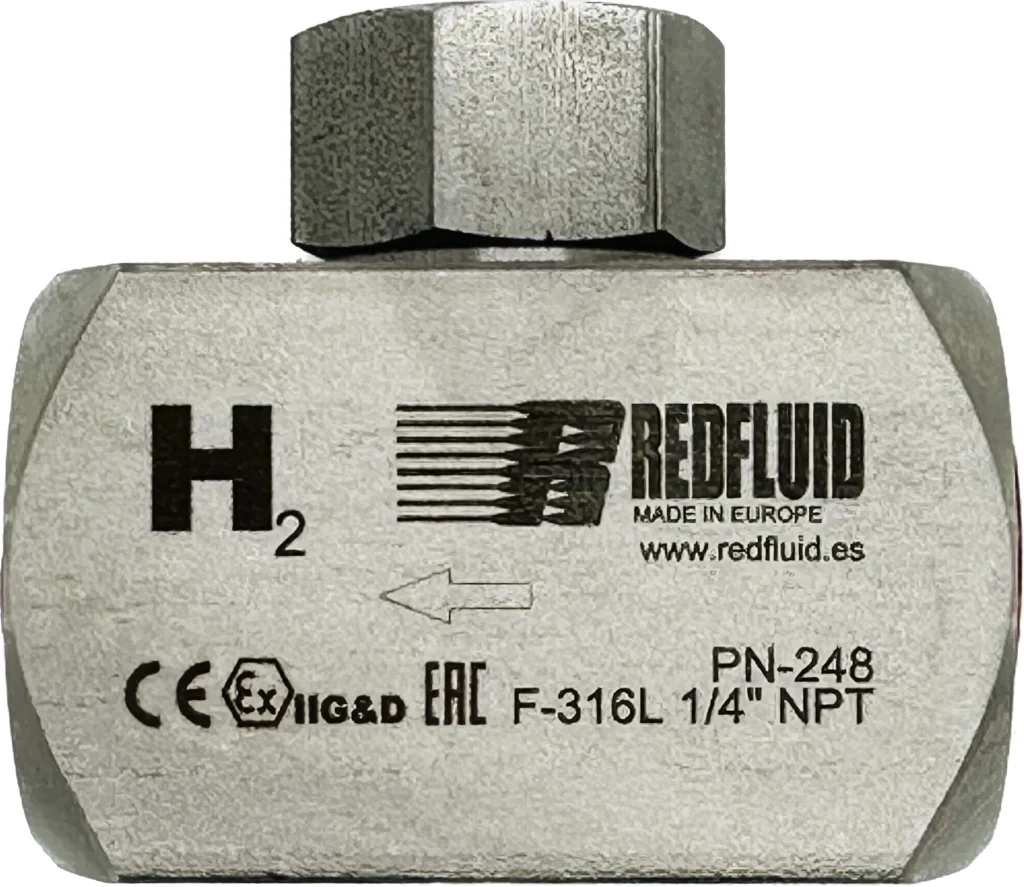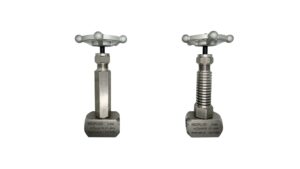
Flushing Ring: the key to cleaning and calibration without disassembly
Imagine you’re running an industrial plant and you’ve got a diaphragm seal protecting a pressure transmitter. Over time, the process fluid starts leaving deposits and
Imagine installing just any check valve in a hydrogen circuit. At first, everything seems to work fine — but over time, internal materials begin to degrade, and gas starts leaking. The result? A serious safety and performance issue caused by choosing the wrong valve. Hydrogen doesn’t forgive mistakes: its nature can compromise components that would otherwise perform well with other fluids.
That’s why, if you’re working with this gas, you need a hydrogen check valve — a valve specifically designed to withstand its unique demands. Not just any valve will do.
Hydrogen is an extremely light, reactive, and flammable gas. It can slip through the tiniest gaps and cause embrittlement in unsuitable metals (known as hydrogen embrittlement). A small selection error can lead to leaks, failures, and even major risks in an H₂ installation. In the current boom of the hydrogen economy, paying attention to every detail is essential to avoid costly surprises.
The solution? Use check valves for hydrogen — designed and engineered specifically for this application. In this article, we’ll explain what a check valve is, how it works, how it’s applied in hydrogen circuits, and, most importantly, why a standard check valve is not suitable for hydrogen. This way, you’ll avoid mistakes and ensure you’re always choosing the right solution for your H₂ projects.
Let’s take it step by step.
Don’t try to run before you can walk.
Before we dive into materials, geometries, or standards, it’s essential to understand exactly what a check valve is and how it works — and above all, why not every valve is fit for hydrogen.
Here’s a short video where we explain it using real examples (duration: ~3 minutes). If you have a moment, it’ll all become crystal clear: Video: Hydrogen check valve.
(English subtitles available.)
A check valve (also known as a non-return valve) is a component that allows fluid to flow in only one direction and prevents backflow. It has no actuator and is not operated manually — it works automatically.
When the fluid reaches a certain pressure (known as the cracking pressure), the valve opens. As soon as the flow stops or tries to reverse, the poppet immediately closes, blocking any return. In a hydrogen system, this function is especially critical to prevent gas from flowing back into sensitive equipment or unwanted areas, avoiding potential leaks or hazardous mixtures.
At Redfluid, we manufacture piston-type check valves, such as the Compact, Vertic, and High-Pressure series — each suitable for different pressure ranges. They are ideal for high-pressure systems and tight spaces. All our models are designed with a reduced bore and optimized for applications where reliability and compactness are key. For instance, our Compact series is widely used in medium-pressure hydrogen applications (up to PN 248 bar), thanks to its robust and proven design.
Because hydrogen, although it may seem like just another gas, follows its own rules. It’s extremely light, highly reactive, flammable, and can degrade internal materials if not properly selected. Using a generic check valve might seem acceptable, but with H₂, there’s zero margin for error. You need a hydrogen check valve specifically designed to withstand its unique challenges.
At Redfluid, we’ve been supplying our Compact series hydrogen-optimized check valve for years, with excellent results in real-world installations. While it may look similar to a standard valve used for air or inert gases, internally it’s a custom design engineered for hydrogen service — same dimensions, different heart.
Externally, a standard check valve and a hydrogen-compatible one might appear identical. But on the inside, the differences are crucial. Let’s take a look at what makes them truly different.

Redfluid’s hydrogen check valve includes several key internal modifications compared to a standard check valve:
Would you like to explore all the available versions and configurations?
You can download the complete Redfluid hydrogen check valve catalog here:
At Redfluid, we adapt every valve to your real working conditions. We understand that hydrogen projects often require specific adjustments, which is why we offer multiple customization options:
We know that working with hydrogen is no easy task. And while check valves may seem like simple components, in critical applications, every detail matters: the type of seal, the spring material, the cracking pressure, or even a properly matched connection can mean the difference between a safe system and a problematic one.
If you’re working on a hydrogen project — or simply want to ensure you’re selecting the right hydrogen check valve — don’t hesitate to reach out. You can contact us directly through our contact form or give us a call.
We’ll be happy to help you find the optimal solution to ensure your hydrogen system operates safely, reliably, and without compromise.
Share this post

Imagine you’re running an industrial plant and you’ve got a diaphragm seal protecting a pressure transmitter. Over time, the process fluid starts leaving deposits and

You’ve probably heard about high-temperature or cryogenic valves, the ones that are incredibly resistant because they operate under extreme conditions. But what makes them so